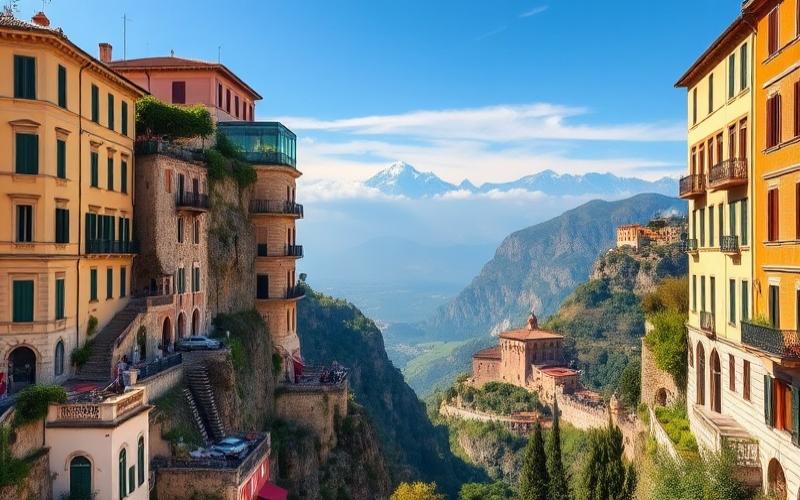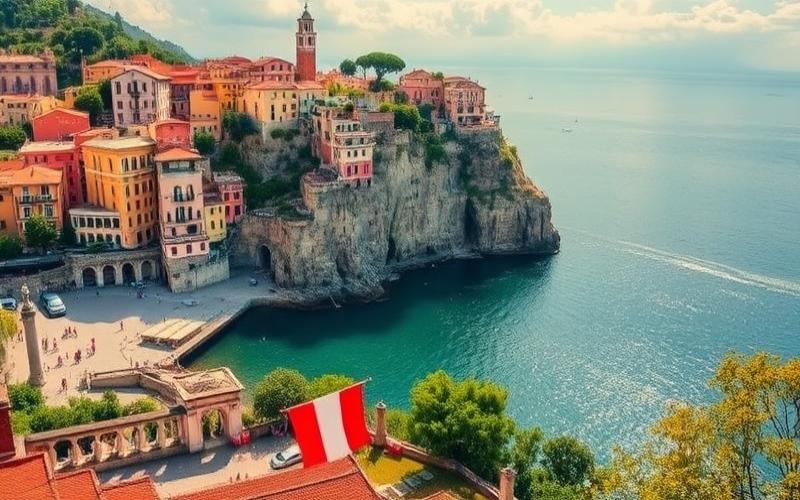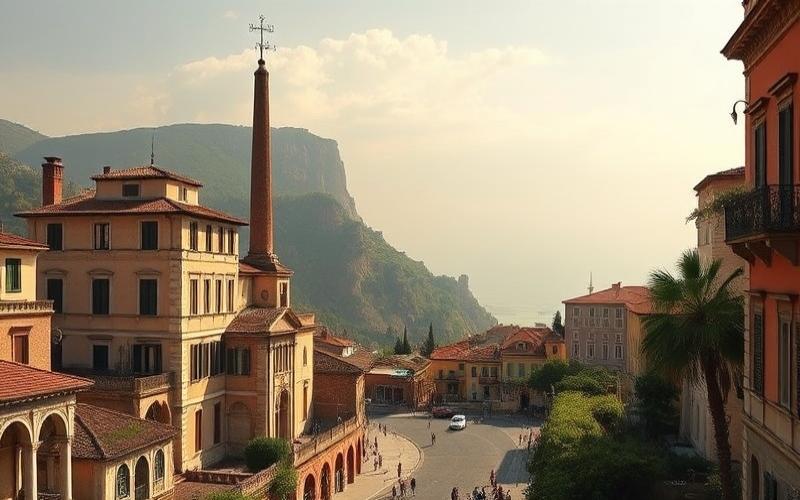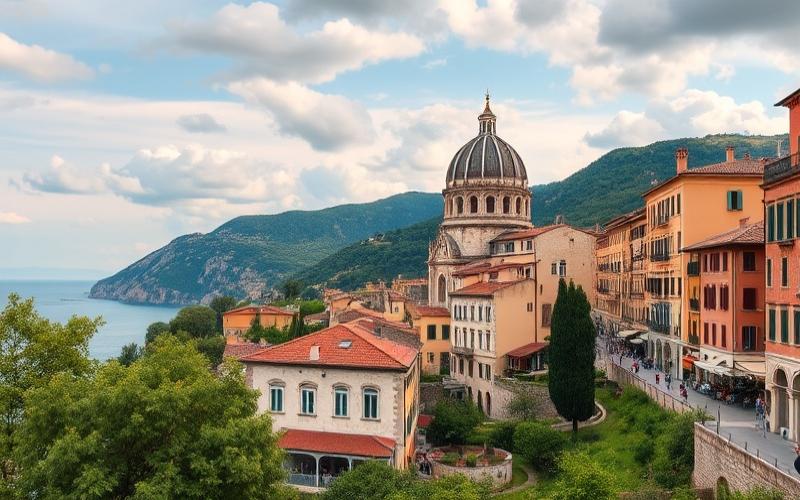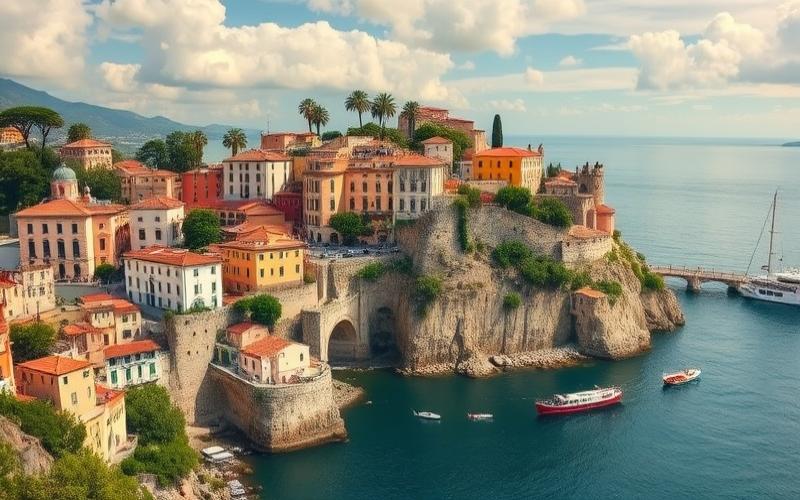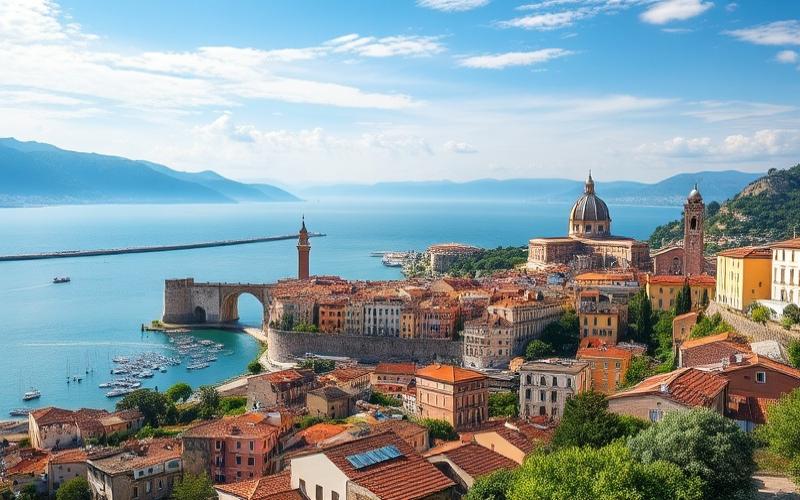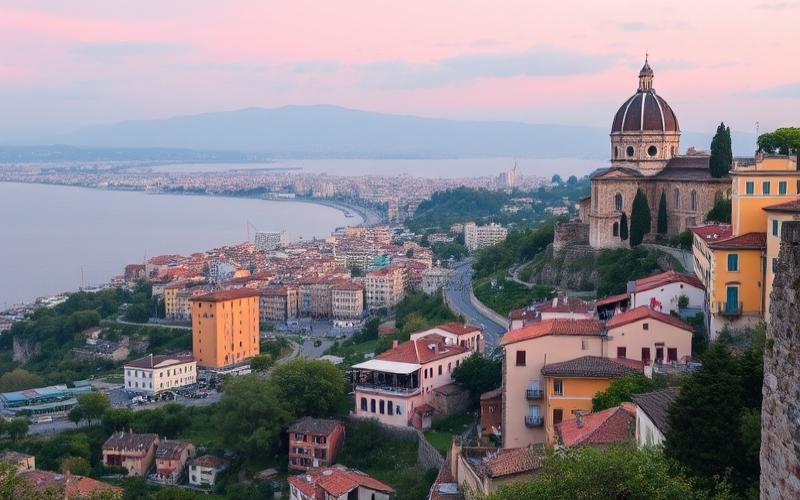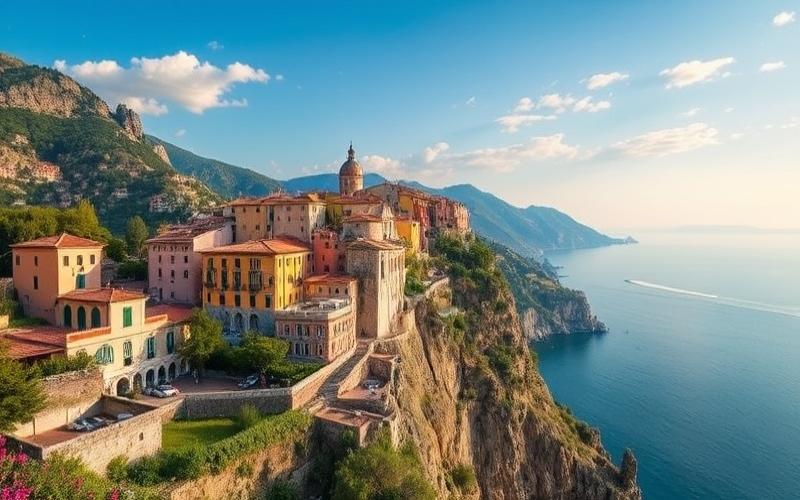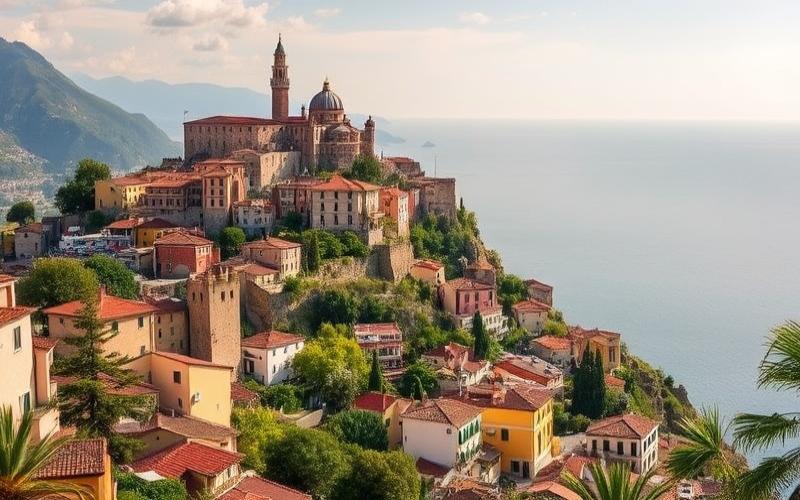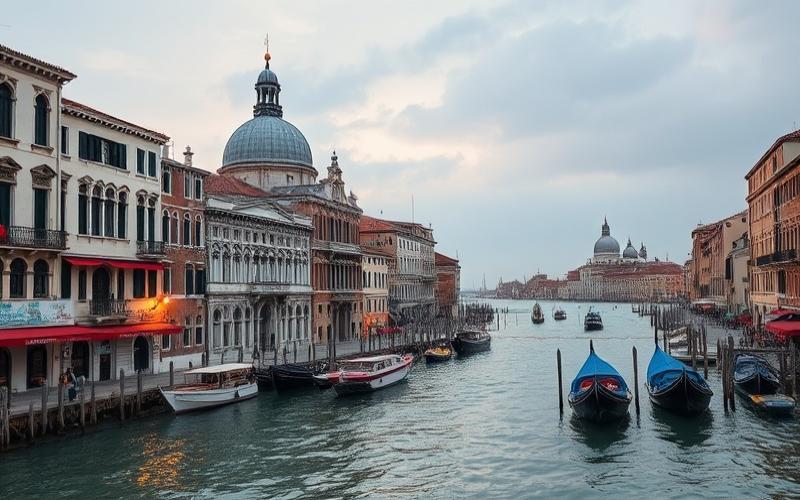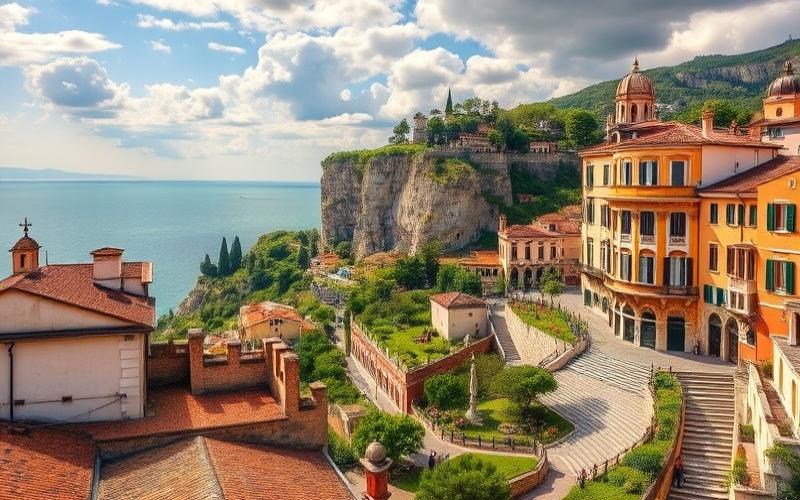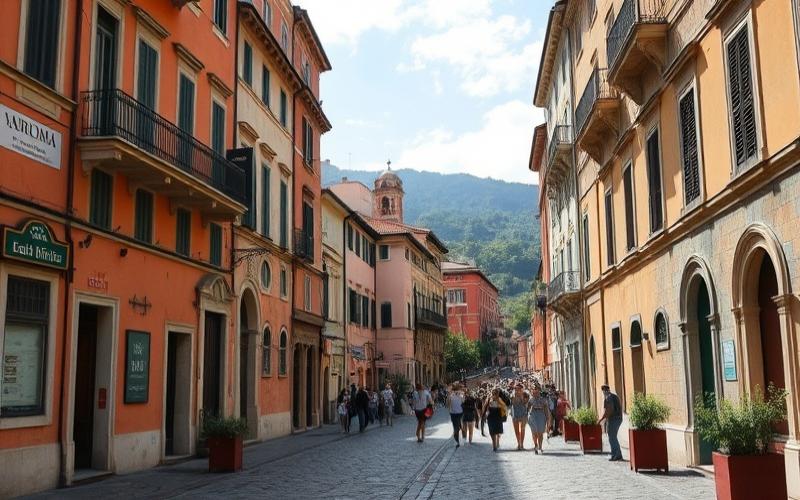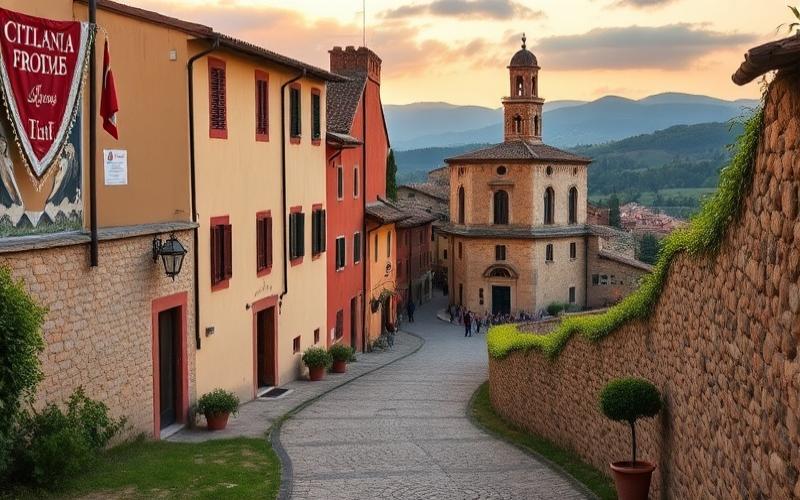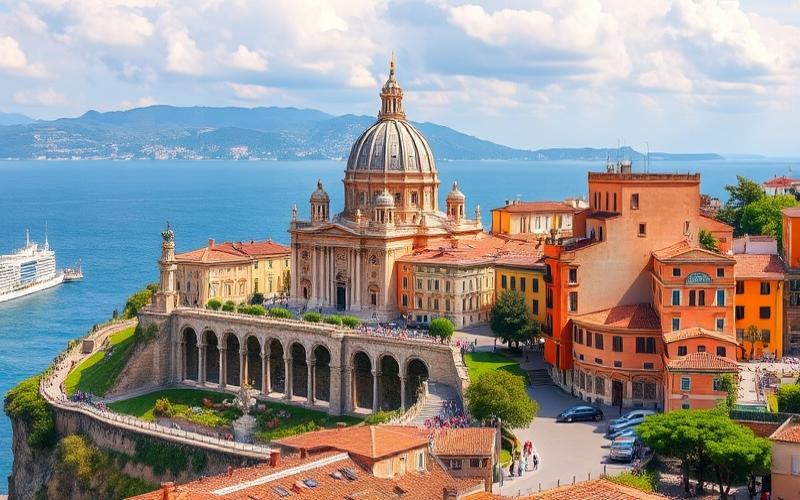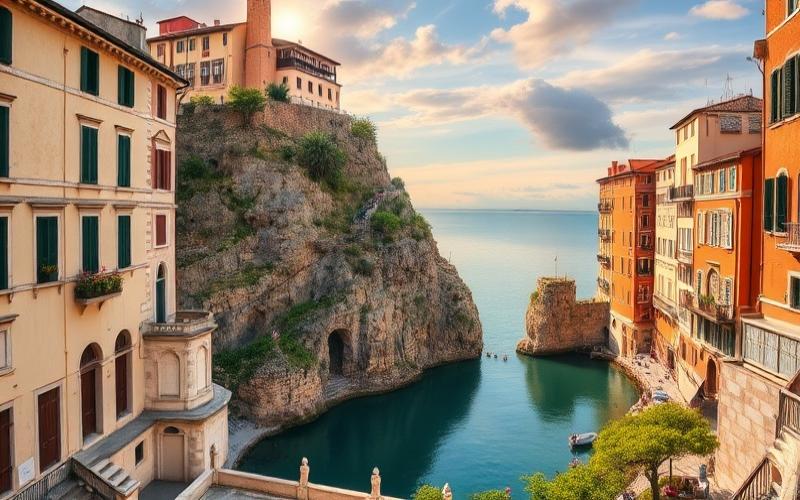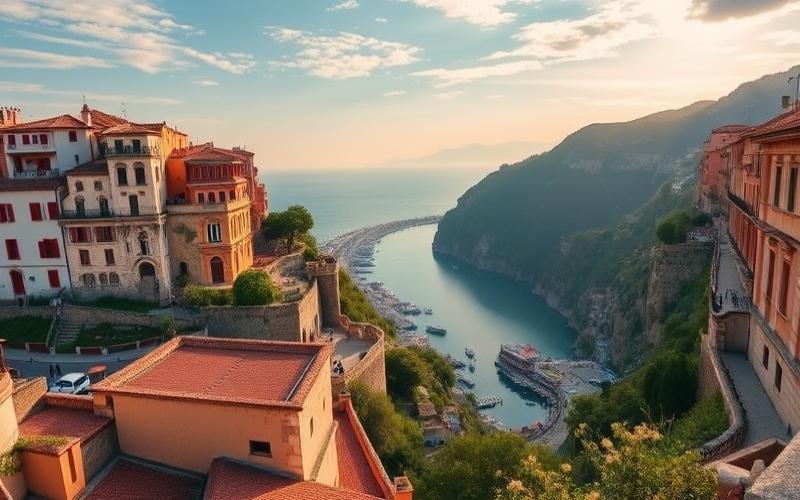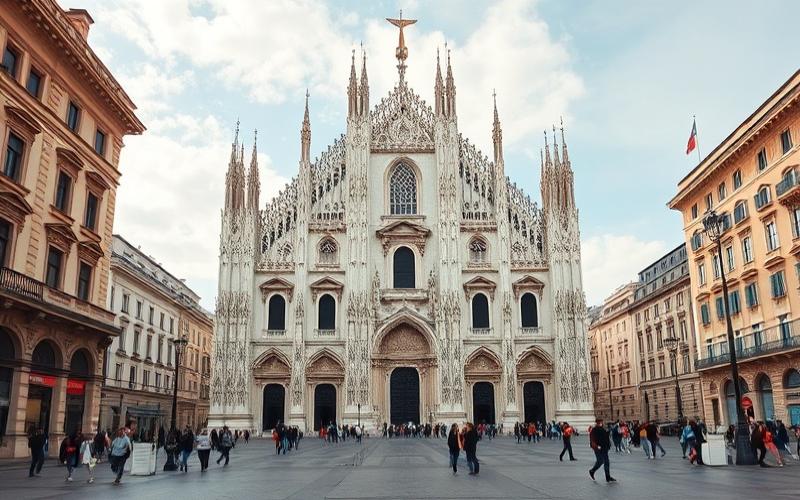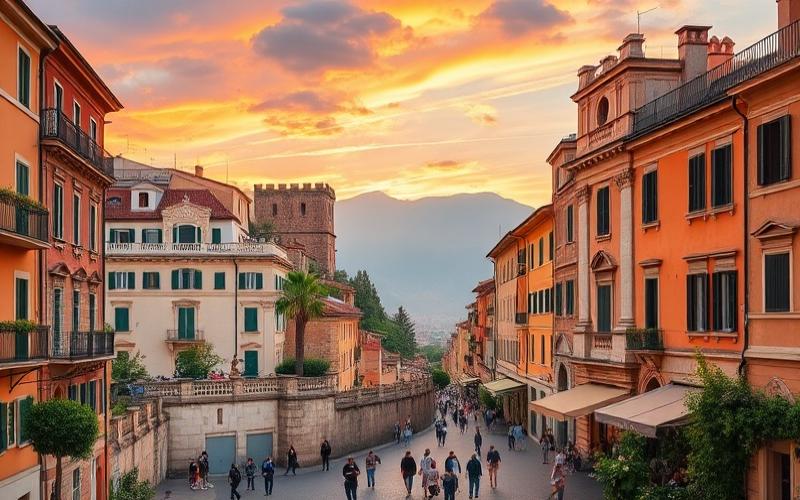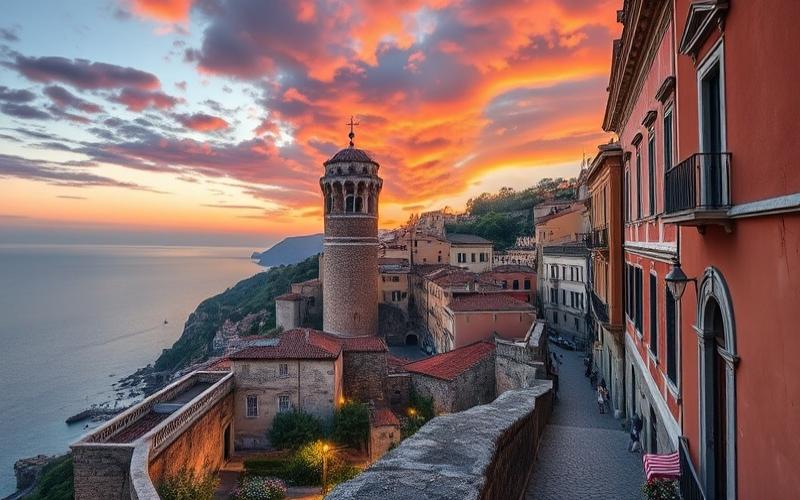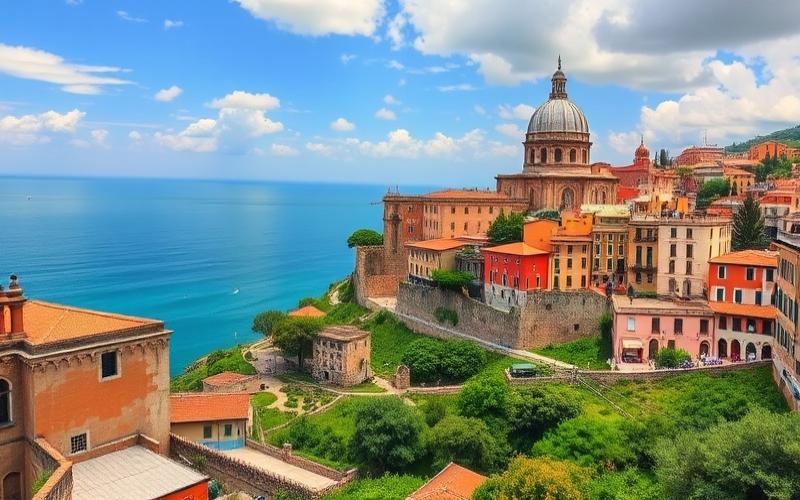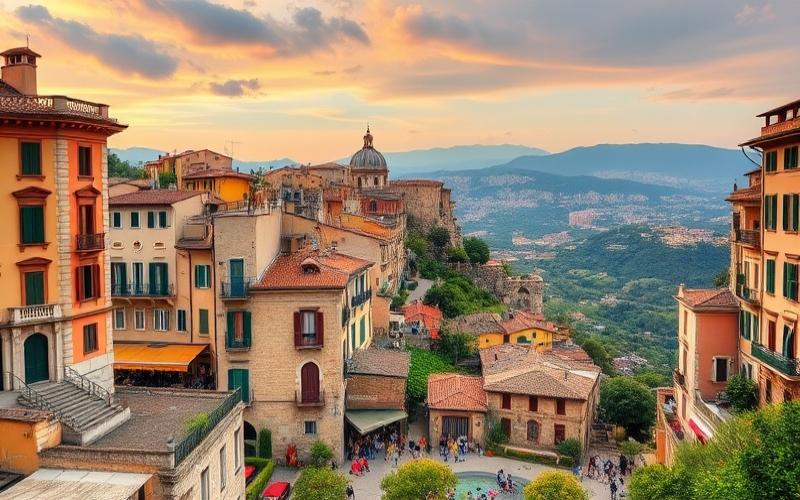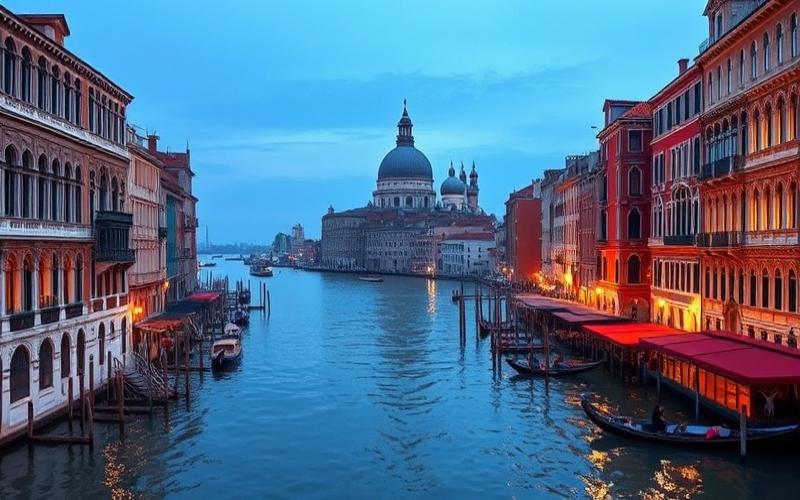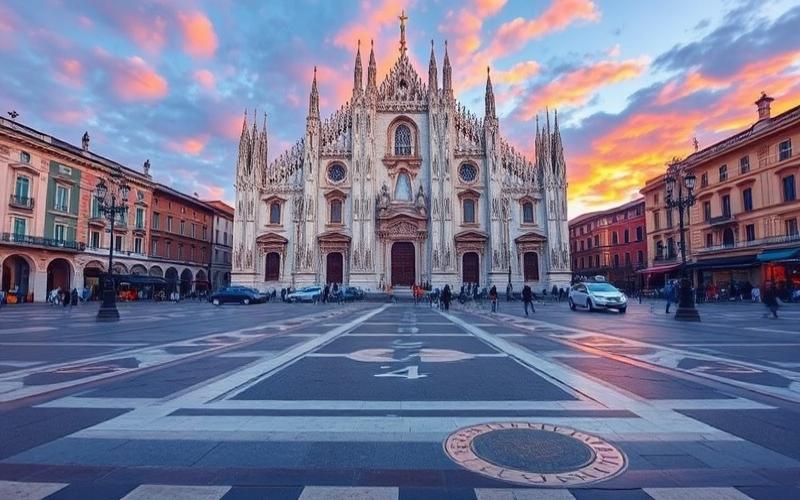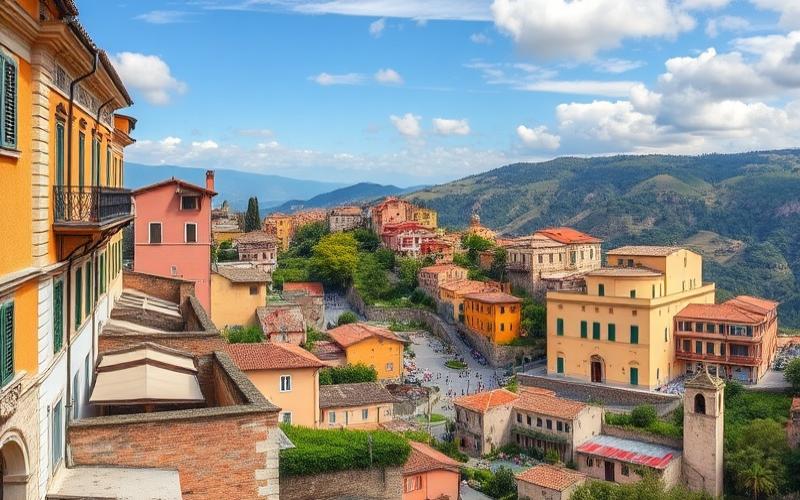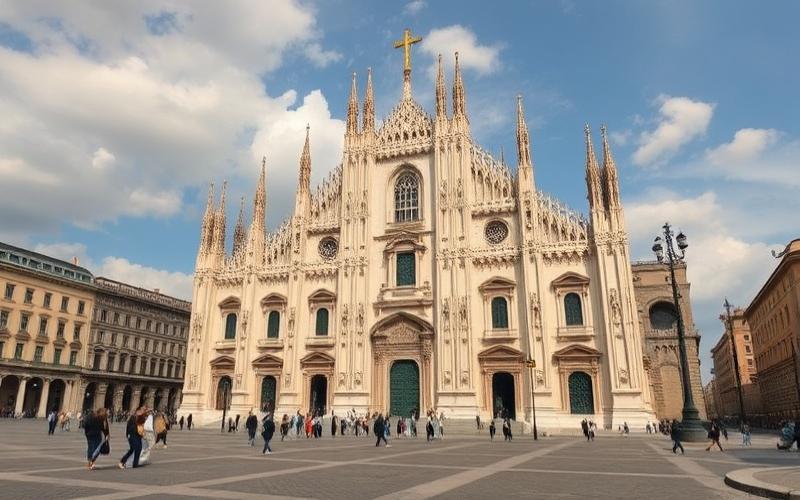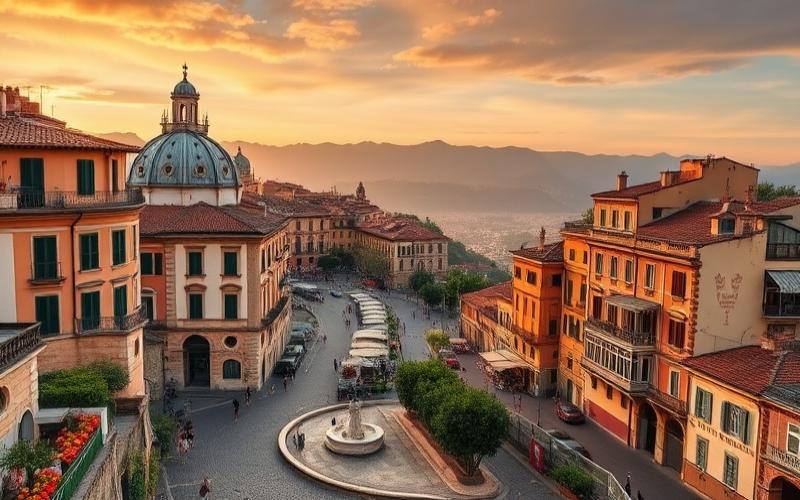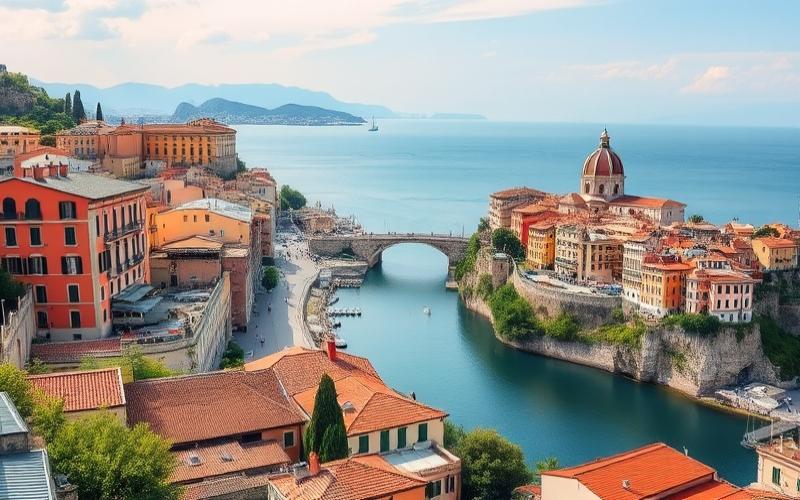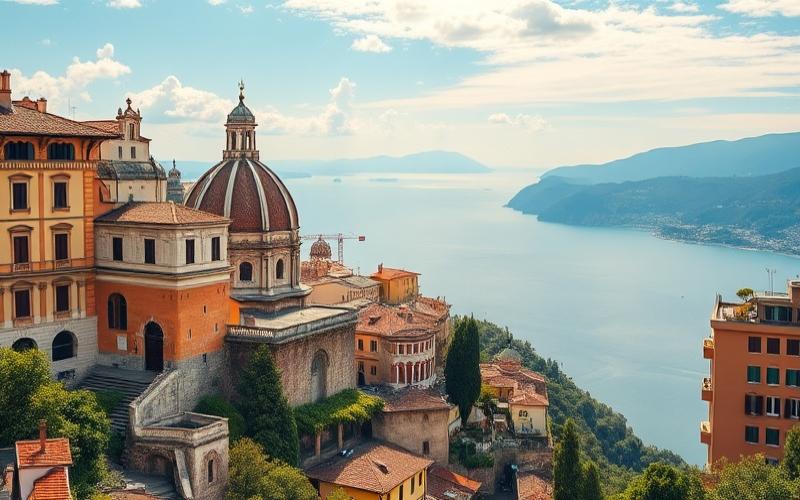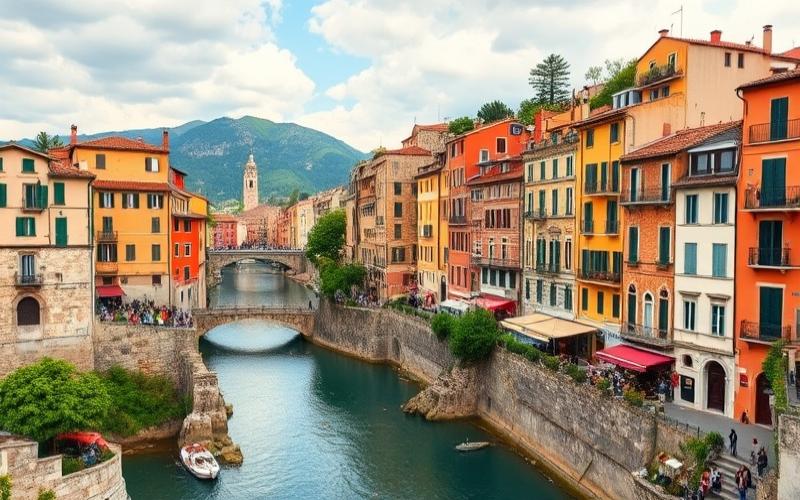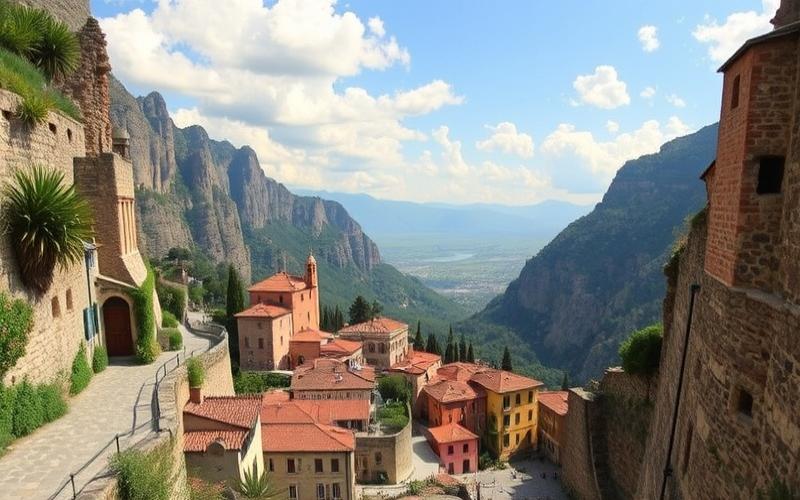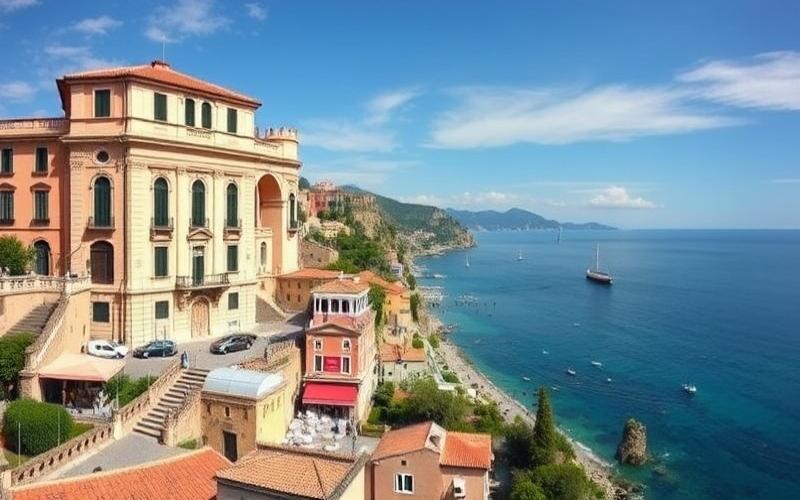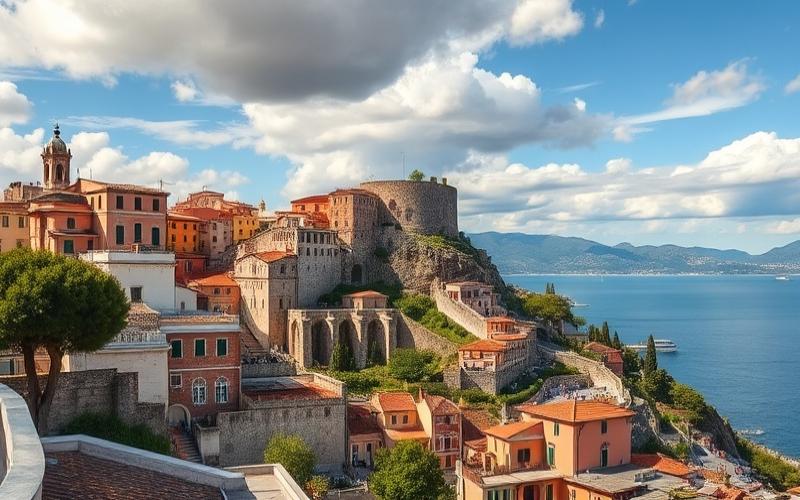
 Published on and written by Cyril Jarnias
Published on and written by Cyril Jarnias
Luxury Real Estate in Italy: An Evolution Shaped by Female Expectations
In the prestigious world of luxury real estate in Italy, the expectations of female clients are evolving in fascinating ways, blending tradition and modernity.
Between Timeless Charm and New Aspirations
While the timeless charm of Tuscany and the historical splendor of Rome continue to captivate, new trends are emerging, reflecting a growing desire for spaces that embody not only luxury but also sustainability values and a harmonious lifestyle.
Properties That Combine Aesthetics and Functionality
These influential women seek properties that blend refined aesthetics with innovative functionality, where every detail is carefully considered to deliver an exceptional living experience.
Good to Know:
The Italian luxury real estate market has been growing by 12% annually for the past 5 years, with increased demand for eco-friendly properties.
By exploring these unique preferences, this article reveals how the Italian luxury market is adapting and innovating to meet the aspirations of these discerning consumers.
Understanding the Expectations of Women Investors in Italy
Women investors in Italian luxury real estate prioritize location, architectural quality, and wellness and security amenities above all, with increased sensitivity toward sustainable and high-energy-performance properties.
Location
- Central and premium neighborhoods with high liquidity (Milan, Rome, Venice), where demand remains strong in the prime segment and supply is scarce, favoring value preservation and resale.
- Proximity to economic hubs, international schools, medical services, and transportation routes (new infrastructure like Milan’s metro that enhance neighborhood value).
- Secure environments with international appeal, a key criterion for family occupancy and social status.
Architecture and Design
- Preference for prestige architecture (high-end contemporary or renovated classic), noble materials, and artisanal finishes, with importance placed on aesthetics as well as long-term value.
- Interest in renovated historical properties in city centers, combining heritage charm and technical upgrades, often catalysts for capital appreciation.
Amenities That Particularly Attract Women
- Enhanced security (guarding, access control, home automation), private spaces, and premium concierge services.
- Wellness: spa, fitness room, pools, landscaped outdoor areas, terraces with views—highly valued features in the luxury segment.
- Family-friendly functionalities: storage, high-end kitchens, en-suite bedrooms, versatile spaces (office, guest room), and smart home solutions for daily convenience.
Importance of Sustainable Investment
- Women investors are increasingly attentive to energy performance, sustainable materials, and certifications (reducing costs, regulatory resilience, better future liquidity).
- In Italy’s prime markets with limited supply, properties aligned with environmental standards tend to maintain a price premium and superior rental appeal, supporting total returns.
Key Takeaways
- Prime location + limited supply = better value protection in cyclical markets.
- Renovated heritage architecture = combination of aesthetic capital and sought-after technical compliance.
- Wellness and security amenities = differentiation at resale and extended personal occupancy.
- Sustainability = reduced risk of obsolescence and long-term rental attractiveness.
Table — Essential Criteria and Expected Impact
| Key Criterion | Why It’s Decisive | Impact on Value |
|---|---|---|
| Prime location (Milan/Rome/Venice) | Sustained demand, liquidity, scarcity | Price protection, smoothed cycles |
| Prestige/renovated architecture | Aesthetics + technical compliance | Price premium, easier resale |
| Security and concierge | Peace of mind, status, family use | Attractiveness to international buyers |
| Wellness (spa, fitness, outdoors) | Quality of life, long-term use | Differentiation in micro-markets |
| Sustainability/energy | Costs, regulation, ESG | Net yield and future liquidity |
Market Dynamics Useful for Decision-Making
- The luxury residential segment in Italy is expected to grow, with a CAGR of around 5% through 2028-2029, suggesting a favorable context for prime acquisitions.
- Milan shows sustained investor demand despite price increases, with quality of supply remaining the main driver amid limited availability.
Recent Statistics on the Growth of Female Investors in Italy
- The Italian luxury residential market is growing at about 5% annually from 2024 to 2029, supporting the entry of new investor profiles, including women, in major Italian cities.
- In prime hubs like Milan, investment demand remains robust despite rising prices, confirming the broadening and professionalization of the buyer base, with increased participation of female profiles in the premium segment.
Checklist — Selecting an Asset Aligned with Female Preferences
- Prime location with access to schools/healthcare/transport and good liquidity prospects.
- Security, concierge, and advanced home automation services.
- Wellness spaces and private outdoor areas with quality views.
- Prestige architecture or renovated heritage, high-end finishes.
- High energy performance and sustainable materials, complete technical documentation.
Good to Know:
In Italy’s luxury real estate sector, women investors are increasingly influential, representing 35% of all high-end transactions in 2023. They favor prestigious locations like central Milan or the Tuscan hills, paying attention to elegant architecture and amenities such as private spas and green spaces. Sustainable investment plays a crucial role, with growing demand for properties incorporating eco-friendly technologies and reducing carbon footprint. Buyers also seek environmentally certified buildings, highlighting a shift toward conscious luxury that appeals through modern values while offering a refined lifestyle.
Security in Women’s Residences in Italy
Luxury women’s residences in Italy typically deploy a three-pronged security approach combining 24/7 video surveillance, on-site security services, and restricted access control (badges, biometrics, filtering concierge), complemented by anti-intrusion devices and fire prevention compliant with Italian legal standards.
High-end buyers and tenants assign high priority to these measures for peace of mind and daily risk management (visitor access, deliveries), especially in urban and tourist areas where opportunistic petty crime is reported as frequent.
Security Measures Available in Luxury Residences
- High-resolution video surveillance covering entrances, parking, and common areas.
- Multi-factor access control: RFID badges/biometrics, private elevators, secure airlocks, visitor logs managed by concierge.
- Human services: 24/7 agents, patrols, concierge trained in emergency protocols, coordination with law enforcement.
- Integrated building security: reinforced doors, electronic locks, strengthened glazing, buffer zones, perimeter lighting.
- Fire prevention and compliance: alarms, detectors (gas/CO), extinguishers per floor/area, documented maintenance, evacuation plans.
- Response tools: alert buttons in common areas, local alert apps, monitoring connected to a central station.
Importance for High-End Female Clientele
- High sensitivity to access control quality, discretion of flows (secure parking, direct elevators), and availability of identified, trained staff.
- Value placed on secure “last-meter” pathways: from street to lobby, lobby to landing, then to residence.
- Preference for non-obtrusive yet effective devices, balancing privacy and deterrence.
- In markets where pickpocketing and theft are reported, on-site team presence and clear protocols are seen as real differentiators at purchase/rental.
Security Differences by Region and Destination Type
- Major cities (Milan, Rome): heightened vigilance against theft in tourist areas, stations, restaurants, and hotels; high-end residences favor strict filtering, secure parking, private elevators, 24/7 reception to reduce public exposure.
- Tourist destinations (Tuscany, Amalfi Coast): more isolation and seasonal flows; approach combines private perimeters (gates, perimeter cameras), control of temporary providers, and fire compliance for seasonal rentals and villas.
- Everywhere: fire safety compliance and mandatory equipment in tourist rentals, with detector and extinguisher obligations, and documented maintenance.
Concrete Examples and Best Practices Observed in Italy
- Urban prime residences with: biometric access to lobbies, elevators directly serving apartments via encrypted key, secure package room, night patrols, and analytics cameras (detecting breaches, abandoned objects).
- High-end rental villas on Amalfi Coast/Tuscany: fenced perimeters, perimeter video protection, provider access management, connected safes, maintained floor extinguishers and gas/CO detectors.
- Upscale apartments for short stays: CIR and regulatory compliance, posted evacuation plans, equipment control logs, proactive communication of secure arrival protocols and anti-pickpocket guidelines for urban travel.
Comparative Table of Security Priorities
| Context | Perceived Risks | Key Expected Measures | Female Client Focus |
|---|---|---|---|
| Milan/Rome (city center) | Opportunistic theft, anonymous access | 24/7 concierge, biometrics, private parking, private elevator | Secure pathways, visitor/delivery filtering, immediate assistance |
| Tuscany (villas) | Isolation, seasonal providers | Enclosed perimeter, external cameras, provider control | Privacy + discreet deterrence, fire compliance |
| Amalfi Coast (luxury rentals) | Tourist flows, multi-level access | Access management (temporary codes), gas/CO detection, extinguishers | Clear protocols, proven maintenance, local risk communication |
Compliance and Operational Points to Require During Residence Audit
- Maintenance log for gas/CO detectors and extinguishers, location and verification dates.
- Visitor and provider policy (identification, temporary badges, supervision).
- Camera mapping, recording retention, central station supervision, and response times.
- Posted and tested emergency procedures (fire, intrusion, medical), trained staff, and exercise traceability.
- Securing the “last meter”: lighting, lobby control, elevators, assigned parking spots.
- Proactive communication on urban and tourist area precautions (anti-pickpocket guidelines, baggage vigilance).
The value of a luxury women’s residence in Italy is measured as much by the quality of its access control and 24/7 staff as by its regulatory fire compliance and clarity of emergency protocols, with particular attention to secure last-meter pathways and discreet devices.
Good to Know:
In Italian luxury real estate, security in women’s residences is paramount, with measures such as advanced video surveillance, on-site security teams, and restricted access systems highly valued by potential buyers or tenants. In major cities like Milan and Rome, where urban crime rates may seem higher, significant progress has been made to provide enhanced protection compared to more touristy locations like Tuscany or the Amalfi Coast, which, while charming, may offer different perceptions of safety. Residences such as those in Milan’s Brera district or Rome’s Parioli are notable examples, adopting innovative technologies to ensure total peace of mind for their residents, a decisive factor for many when deciding to purchase or rent.
Female-Led Architecture in Italian Luxury Real Estate
The rise of female architects in Italian luxury real estate marks a profound transformation of aesthetic codes and design processes, driven by a user-centered, listening-oriented, and detail-subtle perspective that enriches the experience of high-end female clients.
- Sensitivity to project/context/client: the Italian approach inherited from pioneers like Cini Boeri values active listening and rejection of authoritarian prescription, making the client the cornerstone of the project/context/client triad—a stance that naturally aligns with the refined expectations of female clients seeking personalization, comfort, and ambiance control.
- Legacies and legitimizations: from Plautilla Bricci in the 17th century, who fought for recognition as an architect, to the contemporary affirmation of female figures, the trajectory shows a shift from isolated exception to a presence that now shapes Italian luxury references.
- Dialogue with design industries: the interface between interior architecture, furniture, and prestige materials—marbles, iconic lighting, high-end finishes—anchors the Italian signature and offers female creators an expressive ground where sensory coherence and emotional ergonomics prevail.
Main Challenges in a Historically Male-Dominated Sector
- Access to large commissions and full project management, with persistent biases about the “difficulty” of the profession and supposed inadequacy of women for creative and technical leadership roles.
- Unequal institutional and media recognition, despite foundational contributions ranging from architecture to cultural and commercial space design.
- Need for networks and alliances to secure international luxury projects, often structured around mixed teams where female partners play a steering role with demanding clientele.
Inspiring Examples and Effects on the Notion of Italian Luxury
- “Client-first” approach and high-usage spaces for female clients: master suites and scenographic dressing rooms, spa-bathrooms, kitchens as “living rooms”; these choices reflect a vision where beauty never opposes function and daily well-being.
- Architecture-design hybridization: legacy of Gae Aulenti and attention to signature objects (e.g., iconic lighting) serving atmosphere, now reprised in prestige interiors where every element—light, texture, acoustics—tells a coherent story.
- Cross-disciplinary practice and continuous relationship with high-end female clients: Italo-international studios manage from A to Z, favoring proximity, exclusivity, and personalization—a model where female architects excel through fine management of stages and sensitive preferences.
Integrating Female Sensitivity and Specific Needs in Interior Design
- Daily ergonomics
- Fluid domestic circuits (entry–storage–laundry–kitchen) to reduce usage friction.
- Adapted lighting rhythms (day/night scenes, makeup, relaxation) and accent lighting hierarchy for self-care.
- Privacy, security, control
- Mastered zoning between private and reception areas; discreet access; warm yet acoustically performant materials.
- Intuitive home automation ensuring confidentiality and comfort without ostentation.
- Sensory and narrative luxury
- Tactile finishes (noble woods, leathers, velvets), Italian marbles selected for veining and durability, soothing color palette.
- Iconic furniture and custom pieces creating unique identity, at the crossroads of design and architecture.
- Hospitality and representation
- Reception spaces designed for flexibility (intimate dinner vs. prestigious event), scenic yet harmonious, translating Italian elegance without excess.
Table — Design Levers and Benefits for Female Clients
| Key Levers | Implementation | Benefits for Female Clients |
|---|---|---|
| Listening and co-creation | Workshops, sensory mockups, light prototypes | Fine alignment with lifestyle, reduced revisions |
| Architecture-design cross-disciplinarity | Coordinated selection of materials–furniture–lighting | Aesthetic coherence, easier maintenance |
| A-to-Z management | Artistic direction + close site supervision | Execution quality, premium deadline respect |
| Italian heritage | Marbles, crafts, iconic lighting | Culturally anchored and durable luxury |
- Emblematic case studies
- Italian pioneers of design and interior architecture have inscribed a grammar of luxury made of sensitive rationality, listening, and signature pieces—a matrix reinterpreted today by international studios, led by female co-directors and client-oriented methodologies.
- The gradual recognition of historical figures like Plautilla Bricci reinscribes women in the long durée of Italian architecture, legitimizing their role in high space mastery and typological innovation.
By methodically integrating the female perspective—listening, usage, privacy, sensory storytelling—Italian luxury real estate gains relevance, comfort, and uniqueness, offering female clients a deeply personalized, culturally situated, and sustainable experience.
Good to Know:
In Italy, the rise of female architects in luxury real estate is redefining the architectural landscape by bringing a unique and sensitive perspective to high-end projects, thus meeting the expectations of female clients. Despite challenges in a historically male-dominated sector, these professionals leave their mark by capturing the refined essence of Italian luxury, as illustrated by architects like Patricia Urquiola, whose innovative creations harmoniously integrate aesthetics and functionality. By placing particular emphasis on ergonomics, spatial organization, and interior design, these architects enrich the client experience by creating spaces that reflect a deep understanding of female needs and sensitivities, transforming each residence into a personal and elegant sanctuary.
Disclaimer: The information provided on this website is for informational purposes only and does not constitute financial, legal, or professional advice. We encourage you to consult qualified experts before making any investment, real estate, or expatriation decisions. Although we strive to maintain up-to-date and accurate information, we do not guarantee the completeness, accuracy, or timeliness of the proposed content. As investment and expatriation involve risks, we disclaim any liability for potential losses or damages arising from the use of this site. Your use of this site confirms your acceptance of these terms and your understanding of the associated risks.

